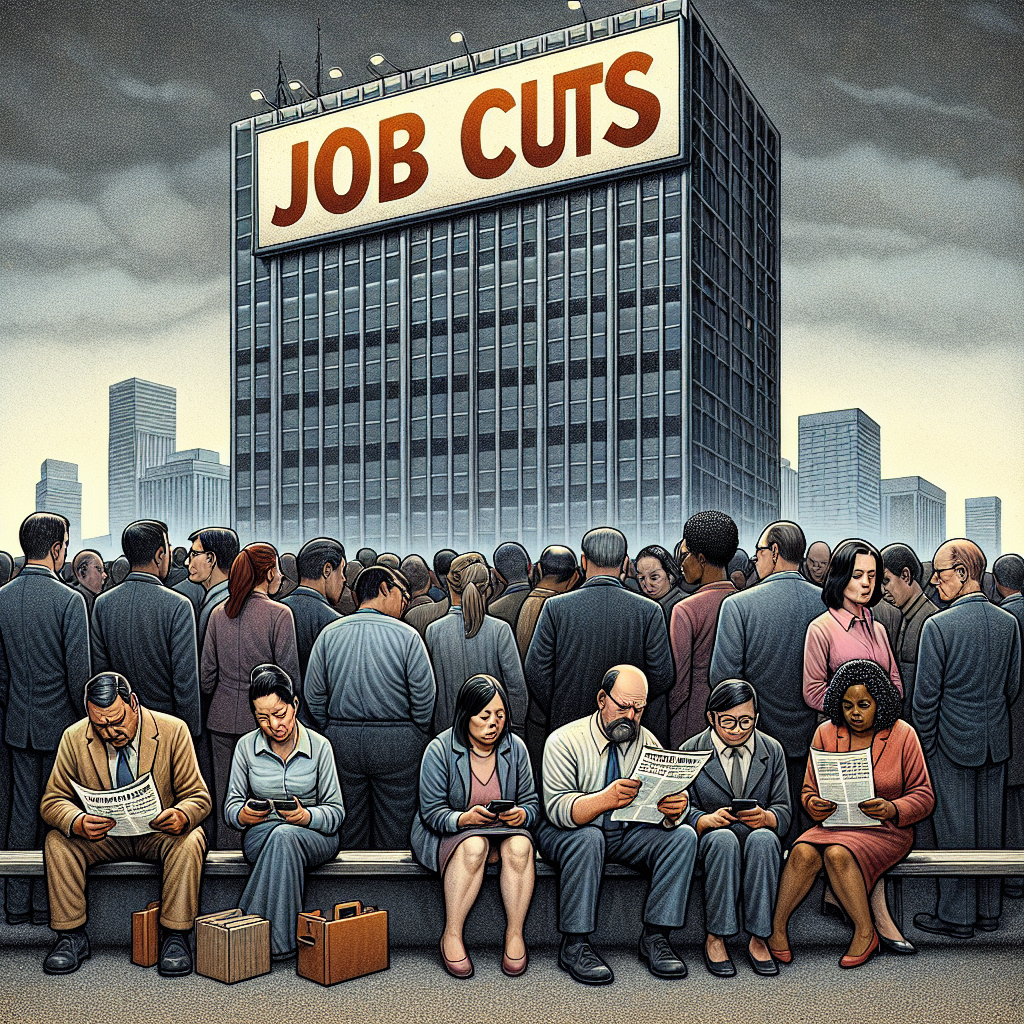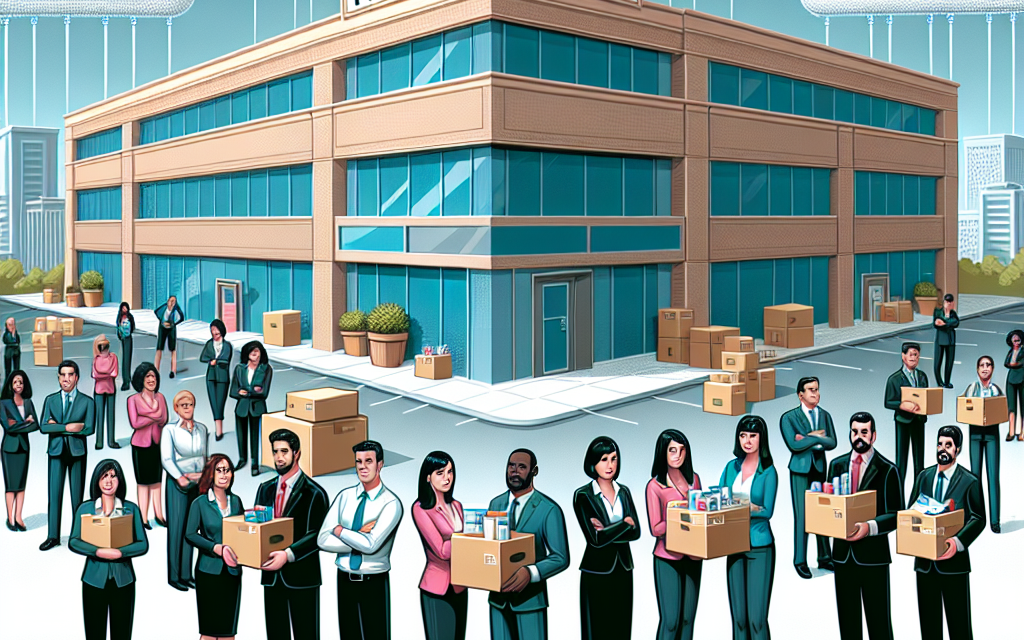Walgreens Announces Over 250 Job Cuts: An In-Depth Analysis

In a significant move that has captured the attention of both industry insiders and the general public, Walgreens has announced plans to cut over 250 jobs. This decision comes amidst a rapidly changing retail landscape and evolving consumer behaviors. In this article, we will delve into the various facets of this development, exploring its implications for the company, its employees, and the broader retail sector.
The Context Behind Walgreens’ Decision
Understanding the rationale behind Walgreens’ decision to cut jobs requires a closer look at the broader context in which the company operates. Several factors have contributed to this strategic move, each playing a crucial role in shaping the company’s current trajectory.
Economic Pressures and Market Dynamics
The retail industry has been under significant pressure due to various economic factors. Rising operational costs, fluctuating consumer spending, and increased competition from both traditional and online retailers have created a challenging environment for companies like Walgreens.
According to recent data, the retail sector has seen a shift in consumer preferences, with more people opting for online shopping. This trend has forced brick-and-mortar stores to rethink their strategies and streamline operations to remain competitive. Walgreens, like many other retailers, has been grappling with these changes, prompting the need for cost-cutting measures.
Technological Advancements and Automation
Another critical factor influencing Walgreens’ decision is the rapid advancement of technology and automation. The integration of technology in retail operations has led to increased efficiency but also reduced the need for certain roles traditionally performed by human employees.
Walgreens has been investing in technology to enhance its customer experience and streamline its supply chain. While these advancements have brought about numerous benefits, they have also necessitated a reevaluation of the workforce, leading to job cuts in areas where automation can take over.
Strategic Restructuring and Business Focus
Walgreens’ decision to cut jobs is also part of a broader strategic restructuring aimed at refocusing the company’s business priorities. In recent years, Walgreens has been expanding its healthcare services, including pharmacy operations and partnerships with healthcare providers.
This shift in focus requires reallocating resources to areas that align with the company’s long-term goals. As a result, certain roles that do not directly contribute to these objectives may be deemed redundant, leading to job cuts.
Impact of the COVID-19 Pandemic
The COVID-19 pandemic has had a profound impact on the retail industry, accelerating existing trends and creating new challenges. For Walgreens, the pandemic has highlighted the importance of adaptability and resilience in the face of unforeseen disruptions.
During the pandemic, Walgreens experienced fluctuations in foot traffic and changes in consumer behavior. These shifts have necessitated a reevaluation of the company’s operational model, leading to decisions such as job cuts to ensure long-term sustainability.
Investor Expectations and Financial Performance
Finally, investor expectations and financial performance play a significant role in shaping corporate decisions. Walgreens, as a publicly traded company, is under constant pressure to deliver value to its shareholders.
In recent years, Walgreens has faced scrutiny from investors regarding its financial performance and growth prospects. To address these concerns, the company has been implementing cost-cutting measures, including job cuts, to improve its bottom line and demonstrate a commitment to financial discipline.
The Impact on Employees and Communities
The decision to cut over 250 jobs at Walgreens has far-reaching implications for the affected employees and the communities in which they live and work. Understanding these impacts is crucial for assessing the broader consequences of the company’s strategic move.
Job Loss and Employee Morale
For the employees directly affected by the job cuts, the news is undoubtedly distressing. Losing a job can have significant financial and emotional repercussions, particularly in an uncertain economic climate.
Employee morale is likely to be impacted not only among those who are laid off but also among remaining staff members. Concerns about job security and the future of the company can lead to decreased motivation and productivity, further complicating the company’s efforts to navigate its challenges.
Support and Transition Assistance
In response to the job cuts, Walgreens has announced plans to provide support and transition assistance to affected employees. This includes severance packages, career counseling, and job placement services to help individuals find new employment opportunities.
While these measures are intended to ease the transition for affected employees, the effectiveness of such support can vary. The availability of new job opportunities and the ability of individuals to adapt to new roles will play a crucial role in determining the long-term impact on their careers.
Community Economic Impact
The job cuts at Walgreens also have implications for the communities in which the affected employees reside. Job losses can lead to reduced consumer spending, affecting local businesses and potentially leading to further economic challenges.
Communities that rely heavily on Walgreens as a major employer may experience a more pronounced impact, with potential ripple effects on local economies. Understanding these dynamics is essential for assessing the broader consequences of the company’s decision.
Corporate Social Responsibility and Public Perception
Walgreens’ decision to cut jobs also raises questions about corporate social responsibility and public perception. As a prominent player in the retail and healthcare sectors, Walgreens is expected to balance its business objectives with its responsibilities to employees and communities.
The company’s actions will be closely scrutinized by stakeholders, including customers, investors, and advocacy groups. How Walgreens navigates this situation will influence its reputation and relationships with key stakeholders.
Long-Term Workforce Strategy
Finally, the job cuts at Walgreens highlight the need for a long-term workforce strategy that aligns with the company’s evolving business priorities. As the retail landscape continues to change, companies must adapt their workforce strategies to remain competitive and sustainable.
For Walgreens, this may involve investing in employee training and development, fostering a culture of innovation, and exploring new business models that leverage technology and automation while preserving jobs where possible.
Industry Trends and Competitive Landscape
To fully understand the implications of Walgreens’ job cuts, it is essential to examine the broader industry trends and competitive landscape. The retail sector is undergoing significant transformation, driven by technological advancements, changing consumer behaviors, and evolving business models.
Rise of E-Commerce and Omnichannel Retailing
One of the most significant trends reshaping the retail industry is the rise of e-commerce and omnichannel retailing. Consumers increasingly prefer the convenience of online shopping, prompting traditional retailers to adapt their strategies to meet these changing preferences.
Walgreens, like many other retailers, has been investing in its online presence and digital capabilities to offer a seamless shopping experience across multiple channels. This shift requires a reevaluation of the company’s workforce and operational model, contributing to decisions such as job cuts.
Technological Disruption and Innovation
Technological disruption is another key factor influencing the retail landscape. Innovations such as artificial intelligence, machine learning, and data analytics are transforming how retailers operate and interact with customers.
For Walgreens, leveraging technology to enhance customer experience and streamline operations is a strategic priority. However, this also means that certain roles may become redundant as automation takes over routine tasks, leading to workforce adjustments.
Changing Consumer Expectations
Consumer expectations are evolving, with a growing emphasis on personalized experiences, convenience, and sustainability. Retailers must adapt to these changing expectations to remain relevant and competitive.
Walgreens has been focusing on enhancing its customer experience through personalized services and sustainable practices. This shift requires a realignment of resources and may contribute to decisions such as job cuts to ensure the company can meet these evolving expectations.
Competitive Pressures and Market Consolidation
The retail industry is characterized by intense competition and market consolidation. Companies are constantly vying for market share, leading to mergers, acquisitions, and strategic partnerships.
Walgreens operates in a highly competitive environment, facing competition from both traditional retailers and online giants. To maintain its competitive edge, the company must continuously optimize its operations and cost structure, which may involve workforce adjustments.
Regulatory and Policy Considerations
Regulatory and policy considerations also play a role in shaping the retail landscape. Changes in labor laws, healthcare regulations, and trade policies can impact how companies operate and manage their workforce.
Walgreens must navigate these regulatory challenges while ensuring compliance and maintaining operational efficiency. This may necessitate workforce adjustments to align with changing regulatory requirements and business priorities.
Case Studies: Lessons from Other Retailers
To gain a deeper understanding of Walgreens’ decision to cut jobs, it is valuable to examine case studies of other retailers that have faced similar challenges. These examples provide insights into the strategies and outcomes of workforce adjustments in the retail sector.
Case Study 1: Sears Holdings Corporation
Sears Holdings Corporation, once a retail giant, faced significant challenges in adapting to the changing retail landscape. The company struggled with declining sales, increased competition, and a failure to innovate.
In response, Sears implemented several rounds of job cuts and store closures in an attempt to reduce costs and improve financial performance. However, these measures were insufficient to reverse the company’s decline, ultimately leading to bankruptcy.
The case of Sears highlights the importance of timely adaptation and innovation in the retail sector. While cost-cutting measures such as job cuts can provide short-term relief, they must be part of a broader strategy that addresses underlying challenges and positions the company for long-term success.
Case Study 2: Macy’s Inc.
Macy’s Inc., a leading department store chain, has also faced challenges in the evolving retail landscape. The company has been implementing a multi-year transformation strategy to enhance its digital capabilities and improve customer experience.
As part of this strategy, Macy’s announced job cuts and store closures to streamline operations and focus on high-growth areas. The company has also invested in technology and innovation to drive its digital transformation.
Macy’s experience underscores the importance of aligning workforce adjustments with a clear strategic vision. By focusing on digital transformation and customer experience, Macy’s aims to position itself for long-term growth and competitiveness.
Case Study 3: J.C. Penney Company, Inc.
J.C. Penney Company, Inc., another iconic retailer, faced significant challenges in recent years due to declining sales and increased competition. The company implemented several rounds of job cuts and store closures as part of its turnaround efforts.
Despite these measures, J.C. Penney struggled to regain its footing, ultimately filing for bankruptcy in 2020. The company’s experience highlights the importance of addressing underlying strategic challenges and adapting to changing consumer preferences.
For retailers like Walgreens, the case of J.C. Penney serves as a cautionary tale about the risks of relying solely on cost-cutting measures without addressing broader strategic issues.
Case Study 4: Target Corporation
Target Corporation, a major player in the retail industry, has successfully navigated the challenges of the evolving retail landscape through strategic investments in technology and customer experience.
While Target has implemented workforce adjustments in certain areas, the company has also focused on expanding its digital capabilities and enhancing its omnichannel offerings. This balanced approach has allowed Target to maintain its competitive edge and drive growth.
Target’s experience demonstrates the importance of aligning workforce adjustments with a broader strategy that prioritizes innovation and customer experience. By investing in technology and adapting to changing consumer preferences, Target has positioned itself for long-term success.
Case Study 5: Best Buy Co., Inc.
Best Buy Co., Inc., a leading consumer electronics retailer, faced significant challenges in the early 2010s due to increased competition from online retailers. In response, the company implemented a turnaround strategy focused on enhancing customer experience and optimizing operations.
As part of this strategy, Best Buy announced job cuts and store closures to streamline its operations. The company also invested in technology and innovation to improve its digital capabilities and offer a seamless shopping experience.
Best Buy’s successful turnaround highlights the importance of aligning workforce adjustments with a clear strategic vision. By focusing on customer experience and digital transformation, Best Buy has been able to navigate the challenges of the retail landscape and drive growth.
Future Outlook for Walgreens and the Retail Sector
As Walgreens navigates the challenges of the evolving retail landscape, it is essential to consider the future outlook for the company and the broader retail sector. Several factors will shape the trajectory of Walgreens and its peers in the coming years.
Continued Digital Transformation
The digital transformation of the retail sector is expected to continue, with companies investing in technology to enhance customer experience and streamline operations. For Walgreens, this means further integrating digital capabilities into its business model and exploring new opportunities for growth.
As technology continues to evolve, Walgreens will need to adapt its workforce strategy to align with its digital transformation goals. This may involve investing in employee training and development to equip staff with the skills needed for the digital age.
Focus on Healthcare Services
Walgreens’ strategic focus on healthcare services is expected to play a significant role in its future growth. The company has been expanding its pharmacy operations and forming partnerships with healthcare providers to offer a broader range of services.
This shift in focus requires a realignment of resources and may lead to further workforce adjustments. However, it also presents opportunities for growth and innovation in the healthcare sector, positioning Walgreens as a key player in this space.
Adapting to Changing Consumer Preferences
Consumer preferences are expected to continue evolving, with a growing emphasis on convenience, personalization, and sustainability. Retailers like Walgreens must adapt to these changing expectations to remain competitive.
For Walgreens, this means enhancing its customer experience through personalized services and sustainable practices. By aligning its business model with changing consumer preferences, Walgreens can position itself for long-term success.
Regulatory and Policy Developments
Regulatory and policy developments will continue to impact the retail sector, influencing how companies operate and manage their workforce. Walgreens must navigate these challenges while ensuring compliance and maintaining operational efficiency.
Staying informed about regulatory changes and proactively addressing potential challenges will be crucial for Walgreens as it seeks to maintain its competitive edge and drive growth.
Embracing Innovation and Collaboration
Innovation and collaboration will be key drivers of success in the retail sector. Companies that embrace new technologies and form strategic partnerships will be better positioned to navigate the challenges of the evolving landscape.
For Walgreens, this means exploring new business models and collaborating with partners to enhance its offerings and drive growth. By fostering a culture of innovation and collaboration, Walgreens can position itself as a leader in the retail and healthcare sectors.
Conclusion: Key Takeaways
The decision by Walgreens to cut over 250 jobs is a significant development with far-reaching implications for the company, its employees, and the broader retail sector. As we have explored in this article, several factors have contributed to this strategic move, including economic pressures, technological advancements, and changing consumer preferences.
For Walgreens, navigating these challenges requires a clear strategic vision that aligns workforce adjustments with broader business priorities. By focusing on digital transformation, healthcare services, and customer experience, Walgreens can position itself for long-term success in the evolving retail landscape.
The experiences of other retailers provide valuable lessons for Walgreens as it seeks to adapt to the changing environment. By embracing innovation, collaboration, and a customer-centric approach, Walgreens can navigate the challenges of the retail sector and drive growth in the years to come.
Ultimately, the future outlook for Walgreens and the retail sector will be shaped by continued digital transformation, changing consumer preferences, and regulatory developments. By staying informed and proactive, Walgreens can position itself as a leader in the retail and healthcare sectors, driving value for its stakeholders and contributing to the broader economy.





